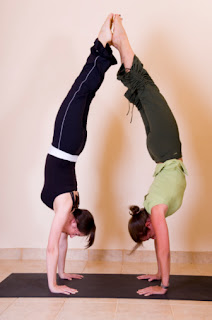There are many myths which surround Yoga. Most of them are circulated by people who have never practiced Yoga of any kind. Yet, there are some myths about Yogic practices, which have been accepted as fact, by seasoned practitioners. It is difficult to shatter an “urban legend, but let’s look at one of them.
“An advanced Yogi can perform amazing postures and feats of physical prowess.”
While this can be true, and Hatha Yoga practice can lead to physical mastery, feats of physical prowess can be performed by young people, who never practiced any form of Yoga before. Please bear in mind that there are many forms of Yoga, which are not based upon physical exercise.
Bhakti Yoga, Jnana Yoga, and Karma Yoga, are primary forms of Yoga, which have advanced practitioners, who do not have to perform physical feats to be known as “advanced.” Mohandas Karamchand Gandhi, was an advanced Karma Yogi, who inspired non-violent civil rights movements within India, and around the world.
The flaw in all of this “labeling” of Yoga practitioners as advanced, intermediate, and beginner, stems from the idea that Yoga is only a physical exercise. Pilates and weight lifting are physical exercise systems, and they require a mental presence in their practice. All forms of Yoga require a mental, physical, and spiritual presence in the practice.
Hatha (union by physical mastery) does not represent all forms of Yoga. If Hatha Yoga were the only style in existence, it still would require teachers with experience and deep knowledge on a vast subject.
Any child can perform amazing athletic feats of flexibility, but would you place your absolute faith in the ability of a child to teach you Hatha Yoga? Would you be concerned about your safety, your physical limits, and the teacher’s experience level?
“Experience” is a keyword, because experience is what really separates the advanced practitioner from the rest. An experienced Hatha Yoga teacher will guide you through the many aspects of Yogic methodology, such as: Asana, Meditation, Pranayama, Mudra, Bandha, Yama, Niyama, and much more.
If you are practicing in a Hatha-based class, which contains postures, but does not contain meditation or Pranayama, you are probably practicing “Yoga Fitness.” There is a saying: “Half a loaf is better than none.” This has never been truer than it is in the case of Hatha Yoga’s exposure to the world.
It may take generations before most practitioners stop to read the Hatha Yoga Pradipika by Swami Swatmarama. The Yoga Sutras, by Maharshi Patanjali, also deserve more contemporary attention. At this time, there are many beautiful books to read, but the classics are worthy of note, and should be “required reading” for advanced Yoga practitioners.
© Copyright – Paul Jerard / Aura Publications
Want to learn more about how to become a certified yoga teacher or practicing yogic techniques as a form of therapy? Please feel free to use the resources on the right side of this page for research.
If you are a teacher, yoga school manager, blogger, e-zine, or website publisher, and are in need of quality content, please feel free to use my blog entries (articles) - Please be sure to reprint each article, as is. Namaste, Paul





No comments:
Post a Comment